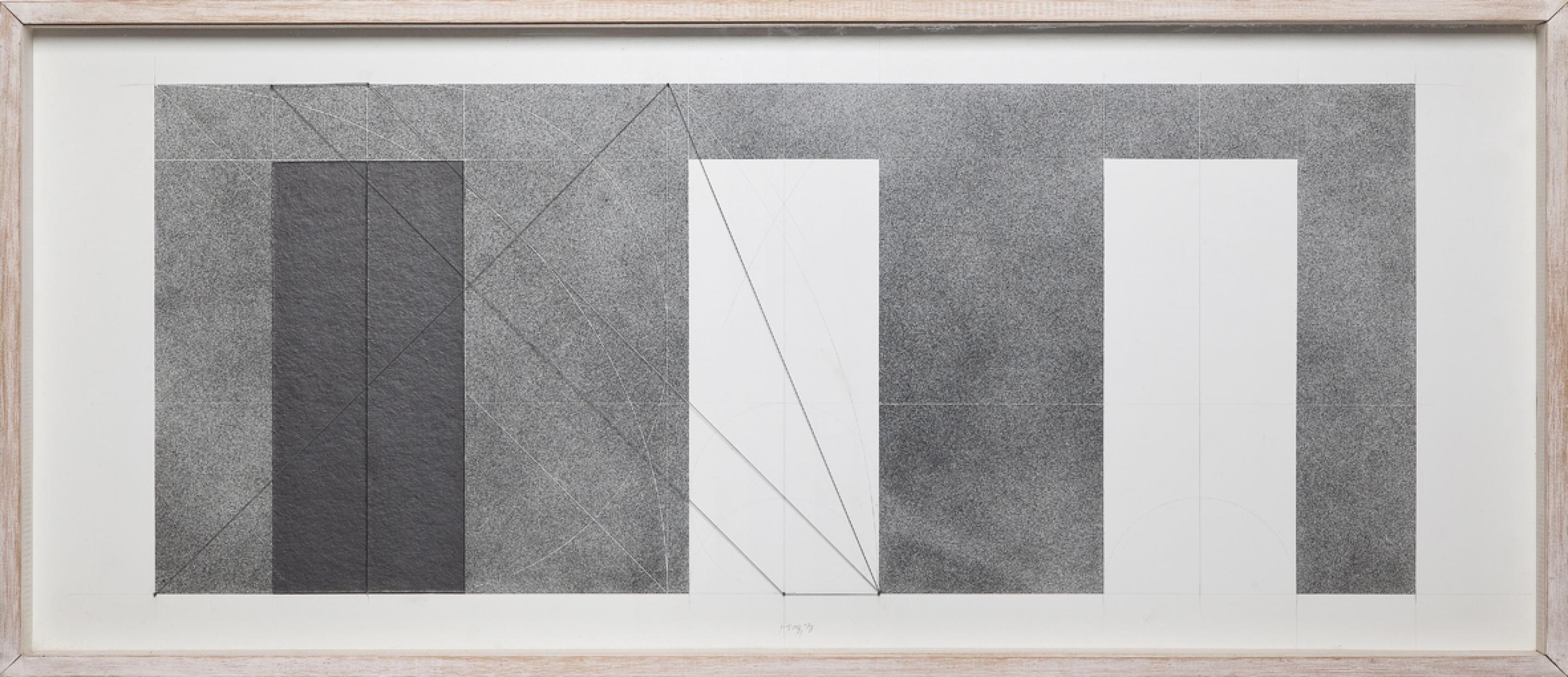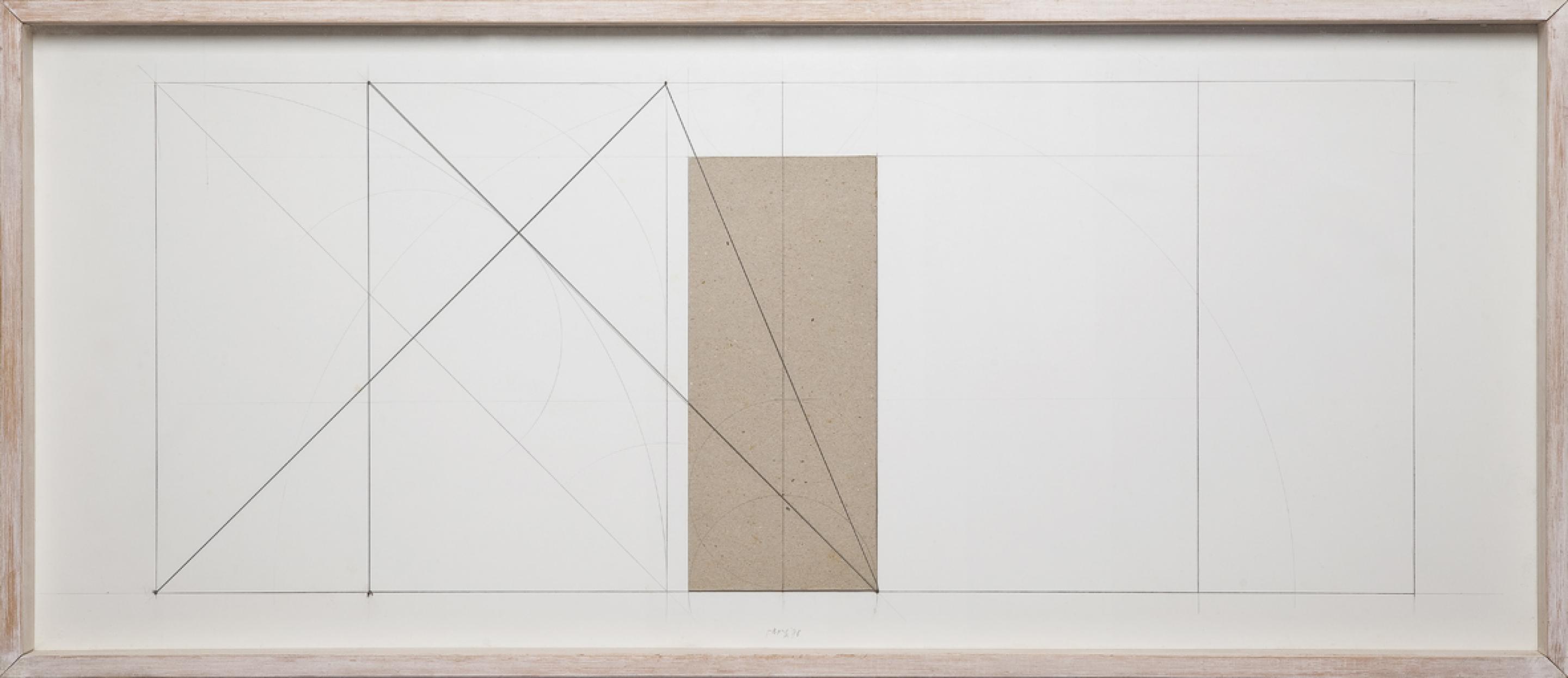GianfrancoPARDI
Gianfranco Pardi. Poetically dwells man on the Earth...
02.2014–04.2014
Gianfranco Pardi. Poetically dwells man on the Earth...
02.2014–04.2014
1/10
Gianfranco Pardi
Architettura, 1973
Aluminium sculpture, acrylics and steel cables
110 x 200 x 18 cm
Architettura, 1973
Aluminium sculpture, acrylics and steel cables
110 x 200 x 18 cm
Press Release
Gianfranco Pardi
...Poetically dwells man on the Earth...
Opening: February 27, 2014
February 28 - April 10, 2014
...Poetically dwells man on the Earth...
Opening: February 27, 2014
February 28 - April 10, 2014
The Marconi Foundation is pleased to present an exhibition dedicated to Gianfranco Pardi, two years after his death, featuring works of the Seventies.
The whole Pardi’s production, within the field of structuralism and conceptual art, is focused on the study of space and the relationship between abstraction and construction.
The rigourous combination of painting, drawing and sculpture is a permanent feature of his work.
The artist has started his reflection over architecture since the end of the Sixties with his early representations of architectonic interiors and exteriors, works that were later titled, exactly, “architectures”.
"When I’m working on a specific problem that I call 'architecture', I know I’m not talking about architecture and that my work does not produce a sort of abstract architecture. But all my work has been focused just on this problem." With “architecture” Pardi wishes to signify a modality, a creative process, a way to concentrate upon building opportunities, plastic experiences that are obviously derived from the vanguard utopias of Russian suprematism and constructivism, as well as Dutch neoplasticism.
He gives his own “reading” of the main figures of those artistic movements, such as Malevič, Tatlin and El Lissitzky, among others.
In this way, the artist can grasp the elements of those artistic experiences which still remain vital, to the point that he must be considered among the most qualified protagonists and interlocutors in matters of contemporary painting and sculpture.
It is in that trajectory that both the series of projects-studies realised with mixed media on paper, Poetically dwells man on the Earth, and the installation with the same title, drawn from a verse of the German poet Friedrich Hölderlin, are oriented.
The whole Pardi’s production, within the field of structuralism and conceptual art, is focused on the study of space and the relationship between abstraction and construction.
The rigourous combination of painting, drawing and sculpture is a permanent feature of his work.
The artist has started his reflection over architecture since the end of the Sixties with his early representations of architectonic interiors and exteriors, works that were later titled, exactly, “architectures”.
"When I’m working on a specific problem that I call 'architecture', I know I’m not talking about architecture and that my work does not produce a sort of abstract architecture. But all my work has been focused just on this problem." With “architecture” Pardi wishes to signify a modality, a creative process, a way to concentrate upon building opportunities, plastic experiences that are obviously derived from the vanguard utopias of Russian suprematism and constructivism, as well as Dutch neoplasticism.
He gives his own “reading” of the main figures of those artistic movements, such as Malevič, Tatlin and El Lissitzky, among others.
In this way, the artist can grasp the elements of those artistic experiences which still remain vital, to the point that he must be considered among the most qualified protagonists and interlocutors in matters of contemporary painting and sculpture.
It is in that trajectory that both the series of projects-studies realised with mixed media on paper, Poetically dwells man on the Earth, and the installation with the same title, drawn from a verse of the German poet Friedrich Hölderlin, are oriented.
Conceived by Pardi in 1977, this installation, displayed at the first floor of the Foundation, complex due to its references and types of elaboration, is of rigorous formal simplicity.
Exhibited for the first time in a solo show held at the Studio Marconi in 1978, it is the result of a reflection regarding the house which Austrian philosopher and engineer, Ludwig Wittgenstein, built for his sister in Vienna during the second half of the Twenties.
"This work (my work dealing with that work), precisely while it grasps a sense within its path, unexpectedly opens out towards new hypotheses…"
Here, “Pardi applied himself with an interpretative furor (that evokes other similar thematic and poetic obsessions of such painters as Monet, Cézanne and others) to deciphering of the measurement of the three doors that opened onto the salon of the Stonborough house” – wrote Bruno Corà in the catalogue Gianfranco Pardi Opere 1970/77, and the result is – “…a doubly profitable meditation on the structure of the form and the thought of the Viennese philosopher”.
At the second floor of the Foundation a significant part of Pardi’s artistic production – some Architectures dating back from 1972 to 1975 – will be on display.
The combination of painting and sculpture, where cables and tie-rods are added and superimposed, is here particularly evident. Among them, we just mention Architecture of 1975 and System of 1976. The first, made up of an iron structure, steel cables and pencil used directly on the wall, manages to conjugate the extreme dematerialisation of the object to an unequivocal presence of its own.
The iron, suspended in the lightness of the cables and the pencil on the wall, continuously “takes place” under our sight, its being never seems to “congeal” into a definitive stability.
System, composed of various elements, is a model which repeats itself – the same and different – and it is done with the poetry which Pardi has capably drawn from structures in iron and steel cables.
It once again affirms the duplicity of its nature: physical and phenomenal, ideal and mental.
On this occasion the Foundation will publish the Quaderno della Fondazione Marconi no. 12, including the images of the works on display, a text by Bruno Corà and a selection of texts written by Gianfranco Pardi together with his biographical notes.
Exhibited for the first time in a solo show held at the Studio Marconi in 1978, it is the result of a reflection regarding the house which Austrian philosopher and engineer, Ludwig Wittgenstein, built for his sister in Vienna during the second half of the Twenties.
"This work (my work dealing with that work), precisely while it grasps a sense within its path, unexpectedly opens out towards new hypotheses…"
Here, “Pardi applied himself with an interpretative furor (that evokes other similar thematic and poetic obsessions of such painters as Monet, Cézanne and others) to deciphering of the measurement of the three doors that opened onto the salon of the Stonborough house” – wrote Bruno Corà in the catalogue Gianfranco Pardi Opere 1970/77, and the result is – “…a doubly profitable meditation on the structure of the form and the thought of the Viennese philosopher”.
At the second floor of the Foundation a significant part of Pardi’s artistic production – some Architectures dating back from 1972 to 1975 – will be on display.
The combination of painting and sculpture, where cables and tie-rods are added and superimposed, is here particularly evident. Among them, we just mention Architecture of 1975 and System of 1976. The first, made up of an iron structure, steel cables and pencil used directly on the wall, manages to conjugate the extreme dematerialisation of the object to an unequivocal presence of its own.
The iron, suspended in the lightness of the cables and the pencil on the wall, continuously “takes place” under our sight, its being never seems to “congeal” into a definitive stability.
System, composed of various elements, is a model which repeats itself – the same and different – and it is done with the poetry which Pardi has capably drawn from structures in iron and steel cables.
It once again affirms the duplicity of its nature: physical and phenomenal, ideal and mental.
On this occasion the Foundation will publish the Quaderno della Fondazione Marconi no. 12, including the images of the works on display, a text by Bruno Corà and a selection of texts written by Gianfranco Pardi together with his biographical notes.









